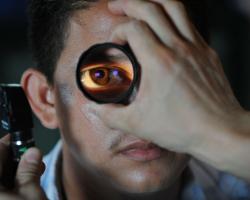Rheumatoid arthritis (RA) is a disease which can lead to severe disability. Despite the stereotypes, it is most frequently diagnosed in young and middle-aged people. Early diagnosis is prerequisite to the effective treatment of the disease.
Rheumatoid arthritis (RA) is a chronic inflammatory disorder that affects the connective tissue. Despite the fact that its causes are not yet known, it is classified as an autoimmune disorder, which means an attack of the immune system against the cells and tissues of the body.
Most RA cases are recorded among persons aged 30-55, which is at the peak of professional and social activity. Women suffer from RA three times as often as men.
There are no exact data on the number of RA patients in Poland. According to Professor Witold Tłustochowicz, National Consultant for Rheumatology, there are around 220 thousand such patients. However, the number may be underestimated due to insufficient data from rural areas.
Not only joints
The disease usually starts with morning stiffness present for over one hour and a symmetrical arthritis accompanied by pain and swelling. Most frequently the disease attacks small joints of hands and feet, but also wrist, elbow, knee and other joints (not including, however, spinal joints).
The initial symptoms of RA also include general malaise, fatigue, muscle pain, perspiration, subfebrile body temperature.
Chronic arthritis leads to their damage and deformation. In acute episodes of the disease, patients have problems with using a toothbrush, combing their hair, with personal hygiene and many other everyday activities.
Although its name does not so suggest, the disease also causes lesions in other organs, such as muscular atrophy, skin nodules, vasculitis, eye tissue inflammation, inflammatory lesions in the heart and cardiomyopathy, pleuritis, pulmonary fibrosis and the so-called secondary amyloidosis, i.e. the accumulation of fibrous proteins in such organs as kidneys or liver.
RA, if not treated, or treated with delay or using improper methods increases the risk of severe disability and premature death.
Seeing a rheumatologist is a must
According to the guidelines of the Polish Rheumatology Society PTR), in the case of noticing symptoms pointing to RA, the patient should see a rheumatologist as soon as possible, so as to undergo tests enabling accurate diagnosis.
According to rheumatologists, from PTR, the patient should be diagnosed within 12 weeks from the first symptoms, as this is prerequisite to the proper treatment, which increases the chances for remission, i.e. the subsiding of the symptoms.
Unfortunately, data for Poland show that patients usually consult rheumatologists with at least a few months’ delay, which diminishes their chances for an effective treatment. This is associated, among others, with disregarding the symptoms of the disease by patients themselves, and also by primary healthcare physicians.
In order to reach a diagnosis, rheumatologists take the medical history of patients with RA symptoms, perform a general examination, and also order the following tests: the level of the so-called rheumatoid factor in blood serum (RF) and of the anti-citrullinated peptide antibody (ACPA), the erythrocyte sedimentation rate, the level of C-reactive protein, blood count with blood smear, as well as the examination of the motion system and an x-ray of the infected joints.
The treatment of RA is the most effective when pharmacotherapy is combined with regular rehabilitation.









Comments (0)